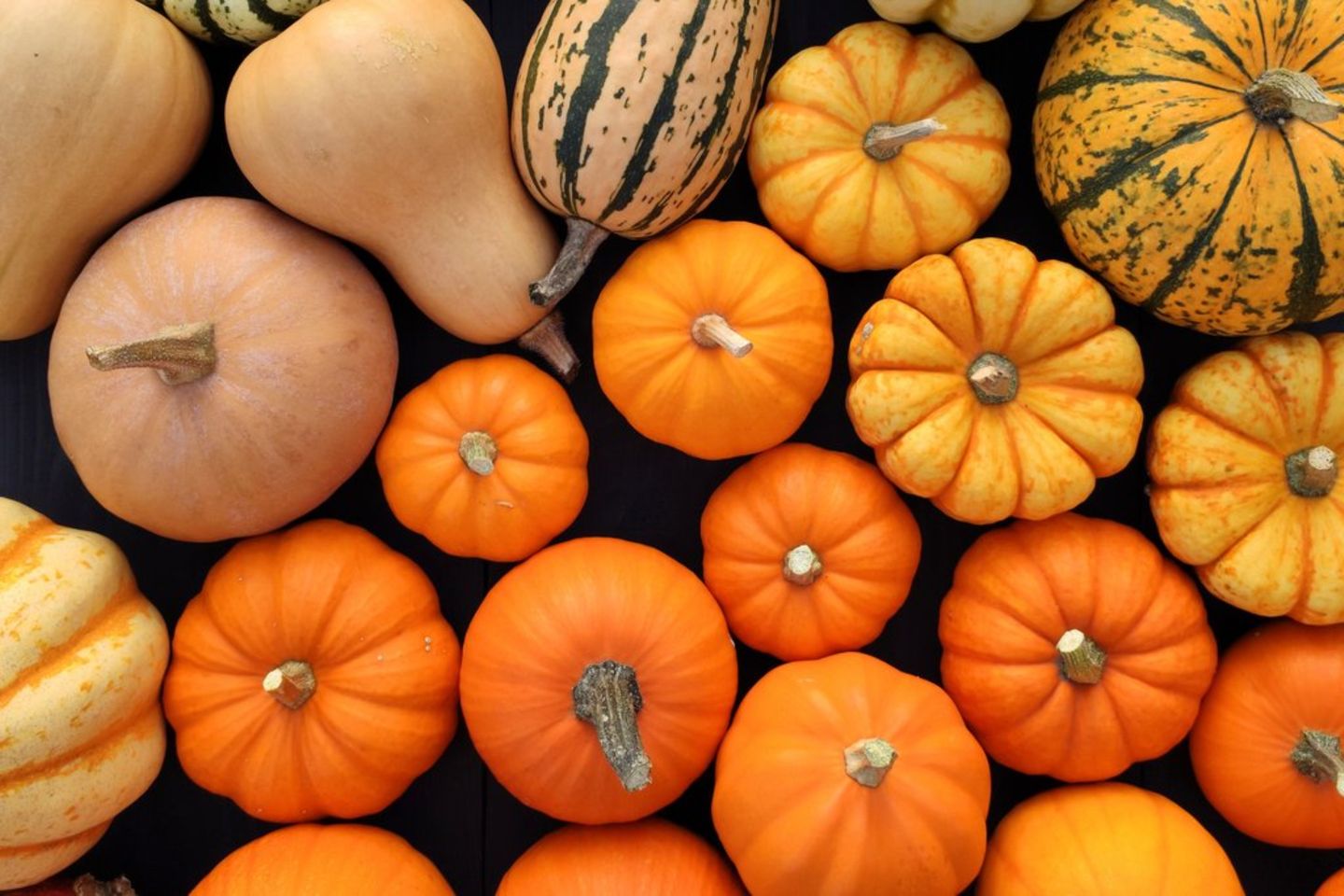From Butternut to Hokkaido
An overview of popular pumpkin varieties
There are over 800 different types of pumpkin.
© Studio Barcelona/Shutterstock.com
Pumpkins provide a treat for the palate in autumn. But not every type of pumpkin is the same: this is something to keep in mind.
In autumn, it’s not just the trees that shine in warm orange and red tones. Colorful pumpkins can now be bought everywhere again. Whether as a warming soup, in pasta dishes or as a delicious side dish – around 200 of the 800 pumpkin varieties are suitable for consumption. Depending on the variety, there are a few things to consider: How do you best prepare the different varieties, when do you have to throw away the peel and how do you make the right decision when shopping? An overview.
Important features when shopping
When purchasing, make sure that the pumpkin does not have any bruises or soft spots. It is better to use smaller specimens as they are less fibrous and have a more intense taste. If the pumpkin sounds hollow when tapped, it is ripe.
The favorite: Hokkaido
The most popular pumpkin variety in Germany is Hokkaido. Despite its small size, it is one of the giant pumpkins. The orange plant originally comes from the Japanese northern island of Hokkaido, which gave it its name in Europe. The flesh is firm, low in fiber and has a nutty taste. The peel can stay on, it will become soft during cooking. Whether as a soup, casserole, puree or pasta – Hokkaido goes well with many things. The pumpkin is good raw in salads or as carpaccio.
Nutmeg pumpkin: Now things are getting colorful
The ribbed shell makes the nutmeg pumpkin an absolute eye-catcher. You can tell how ripe the pumpkin is by its color. When unripe it is green, then slowly turns beige-brown and finally the peel is orange. The nutmeg pumpkin is one of the musk pumpkins and can weigh up to 30 kilograms. Because of its size, it is popular at Halloween for carving faces into it. If the pumpkin ends up on the plate, the peel has to be removed. The pulp is characterized by a nutmeg note – which explains the name. Nutmeg pumpkin is particularly suitable for purees, soups or chutneys. Ginger and chili go well with the all-rounder.
Peel has to go: the butternut squash
Also found in the supermarket is the yellowish butternut squash. The light orange flesh has a light buttery aroma and tastes sweet. The pear-shaped, elongated pumpkin is a musk pumpkin and originally comes from South America. One drawback: the peel takes a long time to become soft. But it has fewer seeds and lasts for several months. Strong aromas such as garlic, chili or curry spices go well with pumpkin. The yellow version also works well in cakes.
Funny look, particularly aromatic: bishop’s hat
The Bischofsmütze variety impresses with its unusual shape: When it grows, the flower base remains in the ring and around it, fruit flesh of a different color usually forms. It is best to hollow it out as the pumpkin is difficult to cut. What’s left of the bishop’s hat doesn’t have to go in the trash, but can be used as a soup kettle. The aromatic pulp is perfect for soups.
The exotic: spaghetti squash
Spaghetti squash is more exotic. This is one of the garden pumpkins, originally from Asia and resembles a honeydew melon on the outside. The pulp consists of long, yellowish fibers that are reminiscent of spaghetti. Preparation is uncomplicated: cook whole or halved and then scrape out the inside with a spoon. Season with salt and pepper, sprinkle Parmesan on top and the pumpkin dish is ready.
Jack be little: small, but mighty
The Jack be Little variety weighs a maximum of 400 grams. Because of its bright orange peel, it is also known as mandarin squash and is often displayed for decoration. The small plant has a sweet flesh that is reminiscent of the taste of chestnuts. You can eat the peel. Jack be Little can be filled well – for example with minced meat or couscous.
